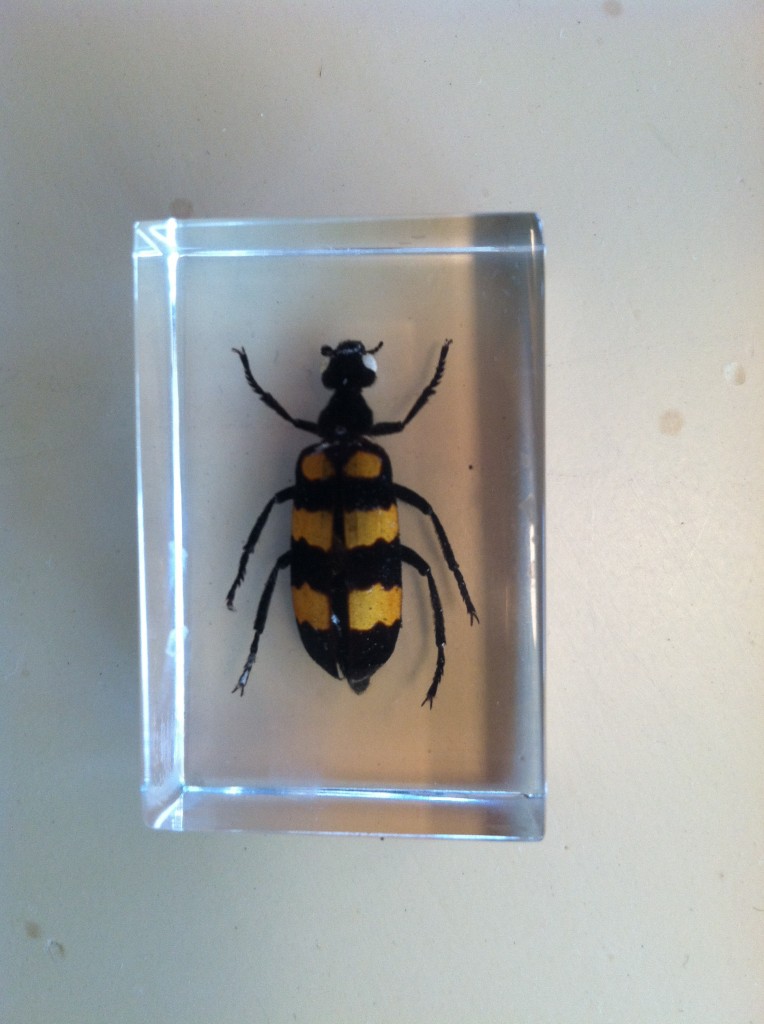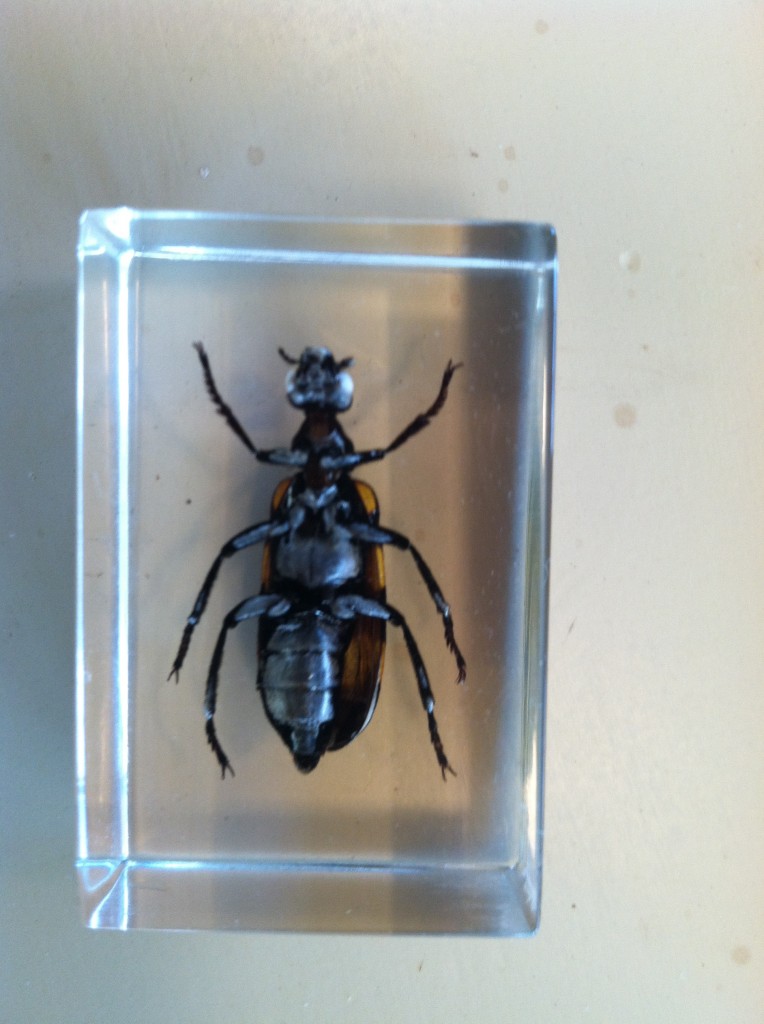 My loyal readers will know how much I love ebay. I’ve made some fantastic purchases there. Here’s the most recent: a Chinese blister beetle. Isn’t it beautiful? Five bucks including shipping. I don’t know the exact species (there are over 1500 of them), but it’s one of the beetles in the order Coleoptera, and it produces a vesicant (blistering agent) called cantharidin. Certain coleopterans are also known as Spanish fly–even though they’re neither a fly nor particularly Spanish–which is thought to be an aphrodisiac. Like so many blister beetles, mine is lovely to look at; can you see its iridescent underside?
My loyal readers will know how much I love ebay. I’ve made some fantastic purchases there. Here’s the most recent: a Chinese blister beetle. Isn’t it beautiful? Five bucks including shipping. I don’t know the exact species (there are over 1500 of them), but it’s one of the beetles in the order Coleoptera, and it produces a vesicant (blistering agent) called cantharidin. Certain coleopterans are also known as Spanish fly–even though they’re neither a fly nor particularly Spanish–which is thought to be an aphrodisiac. Like so many blister beetles, mine is lovely to look at; can you see its iridescent underside?
Male beetles secrete the blistery substance at the joints between their leg segments to deter predators. According to May Berenbaum’s Bugs in the System, males transfer the cantharidin to females when mating, so it actually may act as an aphrodisiac at the insect level.
Cantharidins derived from various species of blister beetle have long been used as medicine, often as topical irritants. When you read about doctors from days of yore using a “blister poultice” on their patients, you can be pretty sure these poultices were made from ground up blister beetles.
The ancient Greeks used blister beetles medicinally, as did the Chinese, for ailments that included tuberculosis, rabies, cancer, dropsy, lice, earaches, leprosy, and ulcers. But as I mentioned, the most famous use of Spanish fly has been as an aphrodisiac, most notoriously by the Marquis de Sade, who poisoned several women (see my prior blog).
Cantharidin is extremely toxic, even at low dosages. Poor George Washington, who was suffering from a sore throat and respiratory infection, was forced by his well-meaning but misguided physicians to ingest a poisonous compound of mercury. They also bled out more than five pints (almost half) of his blood. In addition, blister poultices were slathered on his body, so cantharidin poison no doubt hastened his death.
But actually, the use of cantharidin isn’t all quackery. According to this article from the American Medical Association, the FDA will soon be including it on its “Bulk Substances List,” which will allow physicians to administer a cantharidin compound to patients in their offices, for warts and other viral skin infections.